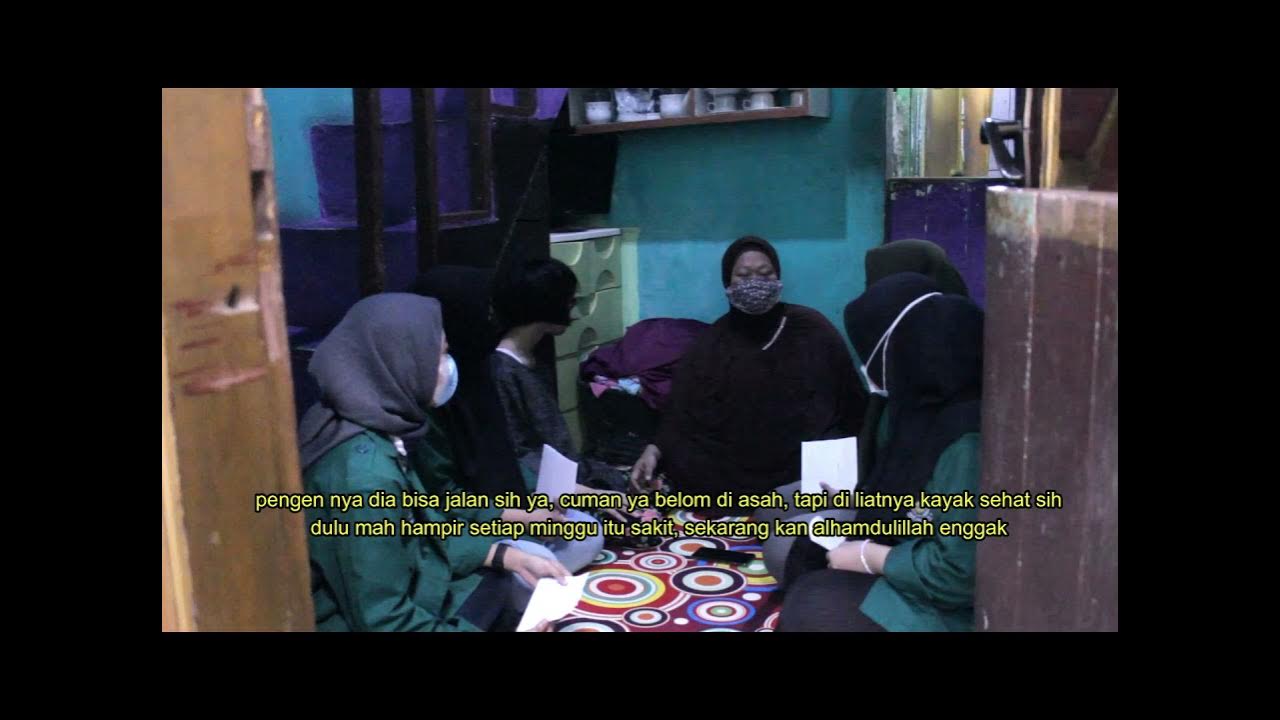How the Aeta People Forage in the Philippines (Pampanga)
Summary
TLDRSusan Alvaro, an Aeta mother, shares insights into her community's traditional farming practices in the mountains. She discusses the cultivation of taro, cassava, lima beans, and winged beans, and the significance of ancestral knowledge in their agricultural methods. The video also touches on the Aeta's adaptation to environmental changes post-Mt. Pinatubo eruption, their reliance on the land, and the importance of preserving their culture and language. It highlights the Aeta's self-sufficiency, their use of traditional cooking methods, and the community's collective memory of their ancestral domain.
Takeaways
- 👩🌾 The Aeta people, including Susan Alvaro and her children, are traditionally mountain dwellers who practice various methods of land preparation for agriculture.
- 🌾 They cultivate crops such as taro, cassava, lima beans, and winged beans, which are essential to their diet.
- 🍠 Historically, the Aeta relied on ube (purple yam) as a staple food, and this knowledge has been passed down through generations.
- 🌱 The drying process of lima beans is highlighted, showcasing the transformation from fresh to dried beans, which are used in various dishes.
- 🌶 The script mentions the unique 'larang labuyo,' a wild chili only found in the Aeta mountains, known for its spiciness.
- 🏞️ The importance of land to the Aeta is emphasized, as it is not only their ancestral home but also crucial for their survival and cultural practices.
- 🌋 The eruption of Mt. Pinatubo had a significant impact on the Aeta people, leading to displacement and changes in their agricultural practices.
- 🏡 The government's resettlement efforts post-eruption are mentioned, along with the challenges of adapting to new soil conditions that are less conducive to traditional crops like rice.
- 🍲 Traditional Aeta cooking methods and recipes are described, including the use of bamboo for cooking and the preparation of dishes like 'Sukit' without modern additives.
- 🗣️ The script highlights the diversity of Aeta languages, such as Mag-indi and Mag-antsi, reflecting the cultural richness within the Aeta community.
- 🌱 The Aeta's respect for their ancestral land and the importance of preserving their traditional foods and culture are central themes in the narrative.
Q & A
Who is Susan Alvaro?
-Susan Alvaro is the mother of the children living in the mountains, where they practice various methods of land preparation for planting.
What crops do the Aeta people traditionally plant?
-The Aeta people traditionally plant taro, cassava, lima beans, and winged beans.
What was a significant food source for the Aeta people in the past?
-In the past, the Aeta people lived off ube (purple yam).
How is the knowledge of farming practices passed down among the Aeta people?
-The knowledge of farming practices is passed down from ancestors to parents and then to the next generation.
What is the significance of the wild chili called 'larang labuyo' to the Aeta people?
-The 'larang labuyo' is a wild chili that grows only in the mountains of the Aeta in Barangay Nabuclod and is known for its spiciness.
How does the Aeta language differ from one region to another?
-Although the Aeta people are a single ethnic group, their language varies by region. For example, in Porac, they use Mag-antsi, while in the area where Susan Alvaro lives, they use Mag-indi.
What happened to the Aeta people during the eruption of Mt. Pinatubo?
-The Aeta people had to run away from the eruption of Mt. Pinatubo, and their lives were disrupted. The government later resettled them in a new location.
Why is the land important to the Aeta people?
-The land is important to the Aeta people because it is where their ancestors lived, and they believe that without the land, they cannot survive.
How do the Aeta people use bamboo in their daily lives?
-The Aeta people use bamboo as a cooking vessel in the mountains when there is no pot available, for cooking dishes, rice, and soup.
What is the Aeta's perspective on relying on assistance versus working hard?
-The Aeta people believe they should not rely solely on assistance but should work hard because the land is theirs, inherited from their ancestors, and they should plant and cultivate it.
What is 'karu' and how is it prepared in Aeta cuisine?
-'Karu' is the Aeta term for kardis (pigeon peas), which are cooked by mixing them into dishes, often without the use of fat or oil, and sometimes just with salt for seasoning.
Outlines

Dieser Bereich ist nur für Premium-Benutzer verfügbar. Bitte führen Sie ein Upgrade durch, um auf diesen Abschnitt zuzugreifen.
Upgrade durchführenMindmap

Dieser Bereich ist nur für Premium-Benutzer verfügbar. Bitte führen Sie ein Upgrade durch, um auf diesen Abschnitt zuzugreifen.
Upgrade durchführenKeywords

Dieser Bereich ist nur für Premium-Benutzer verfügbar. Bitte führen Sie ein Upgrade durch, um auf diesen Abschnitt zuzugreifen.
Upgrade durchführenHighlights

Dieser Bereich ist nur für Premium-Benutzer verfügbar. Bitte führen Sie ein Upgrade durch, um auf diesen Abschnitt zuzugreifen.
Upgrade durchführenTranscripts

Dieser Bereich ist nur für Premium-Benutzer verfügbar. Bitte führen Sie ein Upgrade durch, um auf diesen Abschnitt zuzugreifen.
Upgrade durchführenWeitere ähnliche Videos ansehen

Ground Zero (A short documentary about the China funded Kaliwa Dam project)

CBT Role-Play - Challenging Relationship with Family Member

Case 2

The Joy of Soy - Through the Kitchen Window

Alguns critérios importantes na seleção de leitoas matrizes.

Wawancara Ibu dan Anak Berkebutuhan Khusus Autis PGSD UHAMKA (Kelompok 1 Autistik)
5.0 / 5 (0 votes)
